L-INK
About L-INK
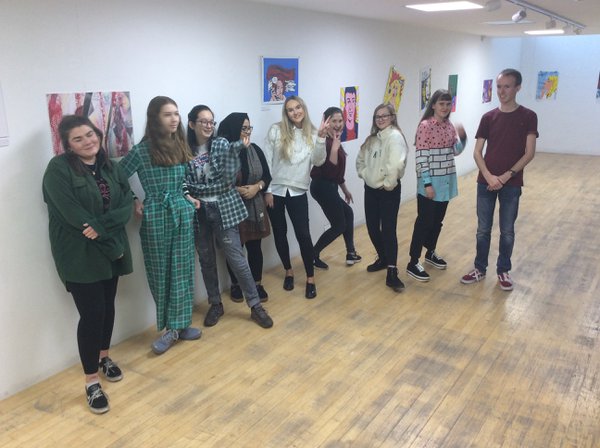
L-INK are a group of young people aged 16-24 years who work with the Laing Art Gallery to collaborate, co-curate, produce events, work with artists and create artworks.
In the past, L-INK have worked on facilitated projects with gallery staff, and have had the opportunity to meet artists, curators and different gallery teams; they have explored collaborative practice, exhibited their own artworks and delivered creative interpretations of works on display.
Facebook: @laingink
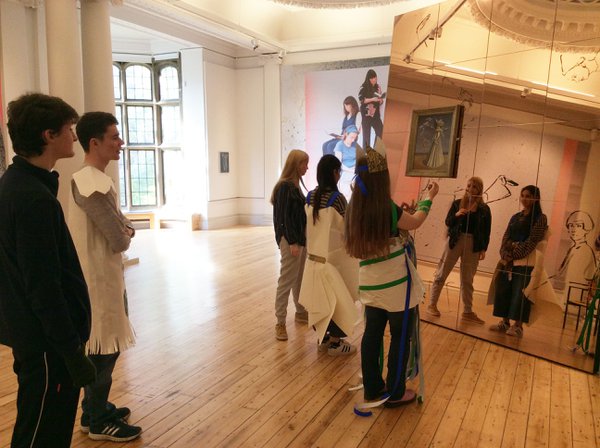
L-INK participants at the Hatton Gallery
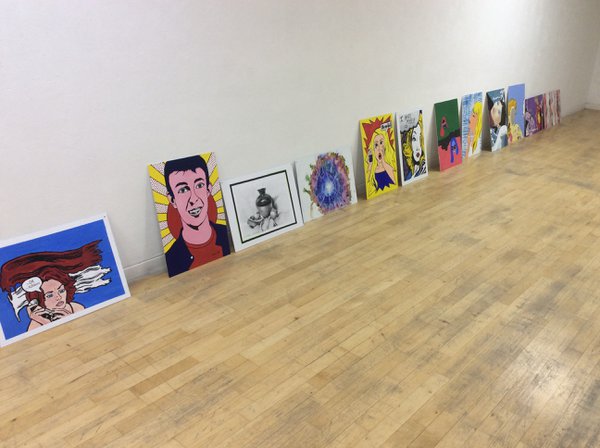
Examples of work from L-INK to Lichtenstein by L-INK participants (2019/2020)
Apply for L-INK 2022/2023
Are you 16-24 years old? Are you interested in art, working with artists, curators, collections and communities? Do you like working as a team and meeting new people? If so, L-INK are looking for you!
The group also get the opportunity to visit other galleries together such as BALTIC, The Workplace Foundation, Tate Modern and The National Portrait Gallery, from there they can build arts connections within the North East and beyond.
This year, L-INK will be developing their collaborative practice to curate a new display for the Laing, with a focus on engaging young communities with the artworks on display. The group will get the chance to get behind the scenes at the Gallery. They will meet gallery staff, work practically and creatively with artists and make connections with other young people’s groups.
The next L-INK project will run October 2022 to July 2023.
Gold Arts Award:
There is an opportunity to complete a Gold Arts Award alongside L-INK. The Gold Arts Award is Level 3 qualification, worth 16 UCAS points. It requires 90 hours of guided learning and 60 hours of independent work, coming to a total of 150 hours. The guided learning will be provided by the Laing as well as support for the independent learning.
Gold Arts Award explores extending personal artistic practice, reviewing arts events/exhibits, planning and organising arts events/workshops, making a case for an arts issue then communicating that, and self-review of personal skills in leadership of organised events.
This will be completed with guidance from an experienced team of Arts Award advisors at the Laing. For further details contact learning@laingartgallery.org.uk or register your interest on the signup form.
Let’s talk about commitment
L-INK is a fixed-term project and we ask for a time commitment of approximately one day per month plus one potential overnight trip to visit other galleries during the Summer. We understand that participants have many extra-curricular commitments and responsibilities as well as school work, so if participants find that they are unable to commit to the project, please let us know so that we can offer places to others.
L-INK sessions usually run from 10.30am – 4pm with a break for lunch.
Where necessary, some sessions may be shorter and/or could take place via video call (advance notice will be given.)
To apply, please send your completed application form to learning@laingartgallery.org.uk
Deadline for applications: Friday 4 November 2022
Got questions? We’d love to hear from you! Email learning@laingartgallery.org.uk
L-INK 2022 Project
The 2022 L-INK project offered the opportunity for the group to go behind-the-scenes at the Laing Art Gallery, learning how artworks are conserved, handled and displayed.
In autumn 2022, the Laing Art Gallery will welcome the Lindisfarne Gospels back to the North East. The exhibition will look at the ways in which the Gospel book can bring people together today by inspiring thinking about who we are and where we come from, about identity, creativity, learning and sense of place. The Gospels has also be the inspiration for a new display at the Laing Art Gallery, specially curated by L-INK, which opened to the public in summer 2022.
The L-INK 2022 project focuses on the idea of spirituality, and what that means to us today. The project invites investigation into the ways in which we infer spiritual or ceremonial meanings upon objects, spaces and architecture.
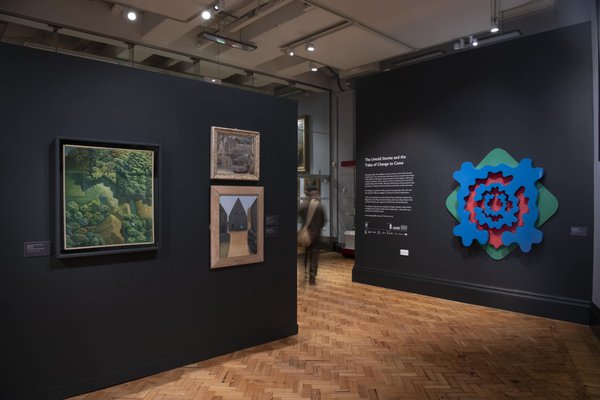
Installation photo: The Untold Stories and the Tides of Change to Come. Photo credit Colin Davison
The group worked with artist Ruth Ewan and Laing Art Gallery staff to expand the theme through active discussion and creative practice, considering both common and uncommon words, messages, actions and rituals that are woven into our daily life.
Following this phase of refection and research, the group curated their own display, The Untold Stories and the Tides of Change to Come, using works from the Laing’s Collection, offering a new perspective upon the messages from Lindisfarne Gospels that are relevant to us today.
The project posed questions such as: Why do we consider some objects ‘sacred’? How do our personal sacred objects contribute to our sense of self or self-worth? How does it feel to display a sacred object? Are there different ways to display artworks so that they tell different stories? What is the role of an artist or a curator? The project also explored exhibitions at other galleries through research trips to museums and galleries outside the area.
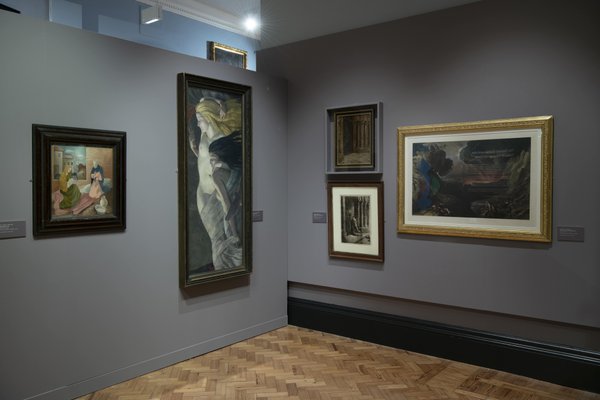
Installation photo: The Untold Stories and the Tides of Change to Come. Photo credit Colin Davison
Previous L-INK projects
2019/2020: L-INK to Lichtenstein
Throughout 2019/2020, L-INK explored a range of topics surrounding artist Roy Lichtenstein and the COVID-19 pandemic. During this time the group curated an exhibition titled 'L-INK to Lichtenstein' where each member created a personal piece of artwork in the style of Roy Lichtenstein. View the full portfolio here >>
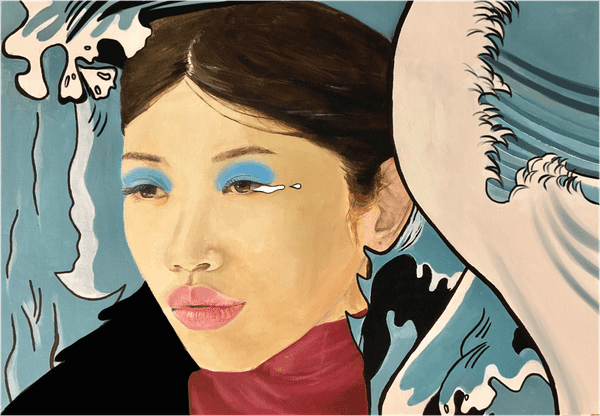
Image credit: Samia Mohammed
2021 exhibition: New Perspectives: Outside In
During 2021, a dedicated space was created for L-INK to navigate and explore as they considered curatorial questions. The group co-curated their own exhibition, New Perspectives: Outside In, for which they drew upon their experience of lockdown to explore issues surrounding identity in relation to domestic spaces. Two new acquisitions by the artist Mike Silva provided the central inspiration for their exhibition, through their representations of intimacy, both to people and familiar spaces.
New Perspectives: Outside In is open to the public until Spring 2022. The next L-INK project will run from November 2021-July 2022.

Image: Mike Silva, Kitchen Window, 2020, courtesy of the artist and The Approach
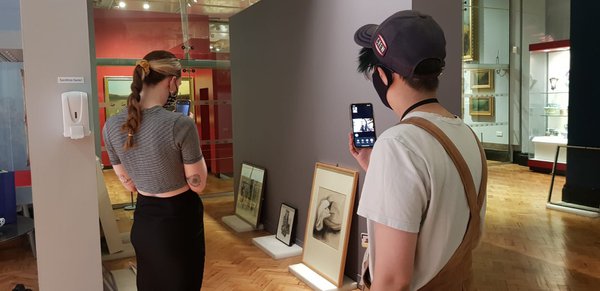
L-INK participants installing New Perspectives: Outside In

Photograph (lightbox) 'Corridor Kitchen (Springfield Hospital)' © Catherine Yass. Installation photo by Colin Davison.

L-R: Reclining Figure, unknown artist/ Laing Art Gallery. Roses 1931 by Andreas Duncan Carse / Laing Art Gallery. Headphones, 2020 by Mike Silva courtesy The Approach / Laing Art Gallery. Installation photography by Colin Davison
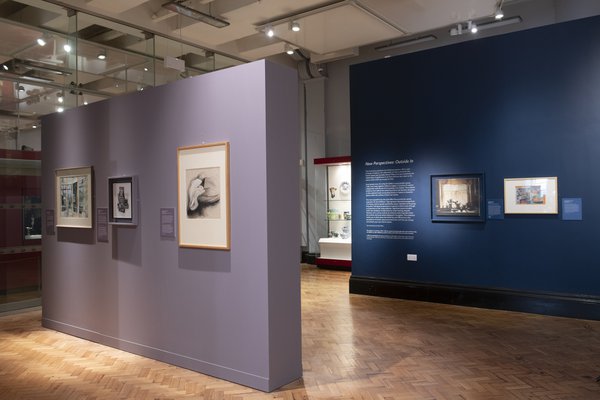
Installation photography by Colin Davison
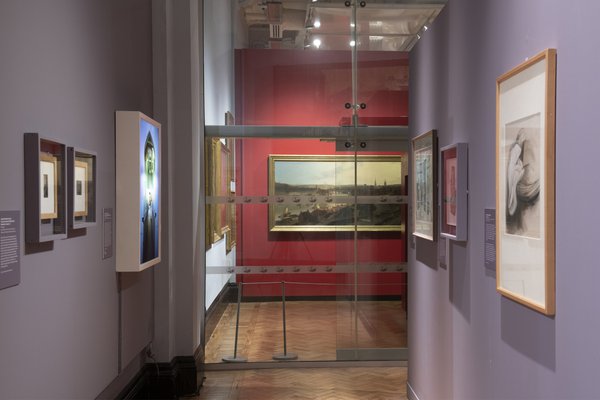
Installation photography by Colin Davison
L-INK interview artist Mike Silva
The Laing Art Gallery recently acquired a trio of paintings by contemporary artist Mike Silva. Participants from L-INK interviewed the artist about his work. This dialogue helped to inform their decision making when they curated their display. New Perspectives: Outside In, reflects the varied discussions had between the group as they explored issues surrounding identity in relation to domestic spaces within the confines of their own homes and represents alternative perspectives of intimacy, both to people and familiar spaces.
Do the people in the original photos get a say in whether or not their photo gets turned into a painting?
Yes as usually the subjects are close friends whom I’m in regular contact with. Of course it’s a completely different situation when I select an image from a magazine or newspaper.
How do you choose the photos you paint? What is the selective process of what photos you include?
The selection is usually intuitive- sometimes it’s the pose or facial expression of the sitter or their clothing . Sometimes its entirely based on composition or the light.
How have people reacted (positively or negatively) to being included in your work?
I once painted an ex lover from the late 90s. The photo was old and torn and I felt there was enough distance between me and the subject to paint him but when he saw himself floating around social media he wasn’t too happy. We lost all contact so there were no way I could contact him but I eventually tracked him down through Facebook and we arranged a studio visit and his response changed when he saw the actual painting. I think my work doesn’t translate too well online as the surface and quality of the paint becomes invisible.
Are there any photos you are particularly looking forward to painting?
I have a wall in the studio where I’ve tacked up a lot of images I want to paint from. Many of course end up just stuck in the wall never to be painted and that’s fine- sometimes it takes years for an image to grow on me.
How does the time gap between the photographs being taken and you painting them influence your pieces? Are there aspects that you edit or change because of this difference in time? Do you think that as we get older we subconsciously edit / re-create our own memories so that they fit within a personal narrative within which we are comfortable?
I started to paint from photographs from the past as a result of revisiting my youth and my surroundings after dealing with serious illness. Going to the studio felt so different and I began to paint from an old photo of my ex partner as a way of making my past into a present tense narrative. Also you get to a certain age and you realise that you have all this history that can be a overwhelming so rather than continually stew in the past it’s great to make something that’s concerned with the present. I rarely edit stuff out deliberately, but things do get lost in translation through the painting process.
Are any photos that turn into paintings enhanced? Is anything omitted?
Nothing is enhanced or omitted. The photo is as it is but sometimes graphics or logos of shops or clothing are edited or simplified for the purpose of painting. I like to make things look easy.
What is the reason for your choice of faded, washed out colours for the paintings? Is this to add an element of grit that would normally not come from those artists whose paintings show colours much more saturated and vibrant?
Sometimes I paint from colour photocopies and the results are often washed out or worn out which I find interesting- maybe it adds an element of nostalgia to the piece.
Is the blurry effect of the paintings to represent memory or to represent the nature of film photography?
The blurry effect isn’t deliberate and is probably the result of the painting process or perhaps too much linseed oil in the medium I use- I always try to make an accurate depiction of the image I’ve chosen, and any mistakes or mishaps are to be cherished as these are the elements that can make a painting interesting but it is never deliberate or knowing.
Would you ever consider painting from digital photos, for example ones taken on a mobile device more recently?
I still take photos with my Pentax K1000 but of course I use my iPhone and I’m always surprised how even photos from 4 years ago seem almost archaic. I recently painted a friend from 3 years ago and it already seems like a different era.
How do you decide on the size of the painting? Does the size of the painting relate to the level of intimacy you wish to portray?
Again this is usually intuitive. I can see an image and know how it will work best either large or small. Usually still lives and interiors work better on a smaller scale. Portraits can either be heroic or intimate depending on the pose or stance.
Given how most of the photographs that you have painted more recently were taken in the moment and not originally done with paintings of them in mind, have you ever been interested in doing painting made from more purpose-taken, composed photographs taken through the artistic lens?
I have taken staged photos before and usually the sitters expressions appear either wooden or knowing- in the past I would take a few reels of film along to a session and it would often be the 2nd reel that would have the most interesting images as the sitter would be either relaxed or bored. It’s incredibly easy now to take photos of people as the culture of social media has made people more aware of how to look. I’ve stopped total strangers in the street and photographed them and the results have been great even though I’d just taken a few snaps.
Does revisiting memories make you remember things you had forgotten? Are they vivid memories or some that were easily forgotten? Memory is usually more potent when it’s contained in our thoughts. Sights and smells can evoke deep forgotten memories- photographs often encapsulate positive memories as I rarely seek out contentious imagery. Gerhard Richter was good at addressing this with his October series dealing with the photographic images of the Red Army Faction.
Does painting the photos help you process negative memories?
I think any activity that does involve conscious thought than help processing negative memory. We all have histories and many of us are survivors and have coping mechanisms that are incredibly strong.
Are there any particular aspects of exhibitions you’ve been to that you liked from a curating perspective? What aspects have you liked about previous exhibitions your work has been involved in?
I remember seeing Richard Billingham’s photographs of his family pinned all over the wall at the Sensation exhibition at the Royal Academy - they were hung at different heights not in a grid formation. The work stood out as the photographs were both intimate yet confrontational. They weren’t voyeuristic and you could tell he had a real empathy with his subjects.
Has art helped you with your mental health and your general resilience to haters/negative things that happened/happen in your life?
I think painting objectively from images I find interesting has been so helpful with my mental health. I love and admire many painters who make abstract work and wonder how they developed such an incredible skill in building up layers and forms intuitively knowing when to stop. That’s real skill to me. I’m an emotional person and I want to be liberated from emotion when making painting.
Are there any artists you look up to personally?
Christopher Wool, Amy Sillman , Alex Katz, Giorgio Morandi, Peter Doig, Andy Warhol, David Hammons, Robert Ryman , Pablo Picasso.
What do you hope people take away from viewing your artworks?
I hope people can focus more on the surface and touch of the painting- that’s where the real content is.
With thanks to Mike Silva and The Approach.
About the Laing Art Gallery
The Laing Art Gallery was founded in 1901, by Alexander Laing, a Newcastle businessman who had made his money from his wine and spirit shop and beer bottling business. Alexander Laing didn’t leave any paintings or other art to the Gallery. He said that he was confident “…that by the liberality of the inhabitants [of Newcastle] it would soon be supplied with pictures and statuary for the encouragement and development of British Art”. The gallery today is home to an internationally important collection of art, focusing on British oil paintings, watercolours, ceramics, silver and glassware.

Marble hall featuring a marble sculpture of Alexander Laing (1905) by Christian Neuper (1876-1950).
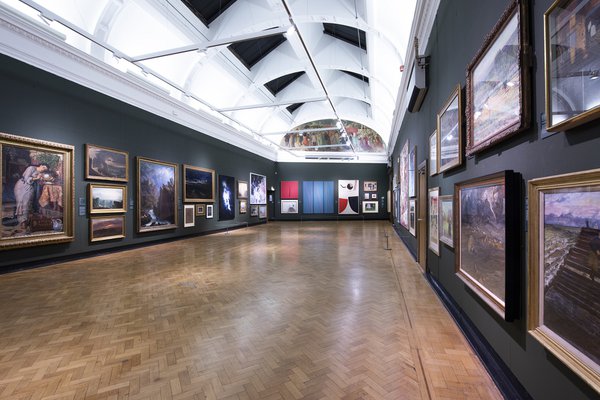
Collection display



